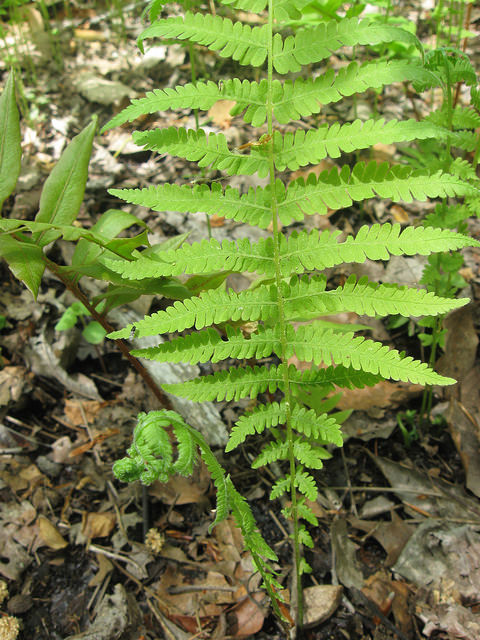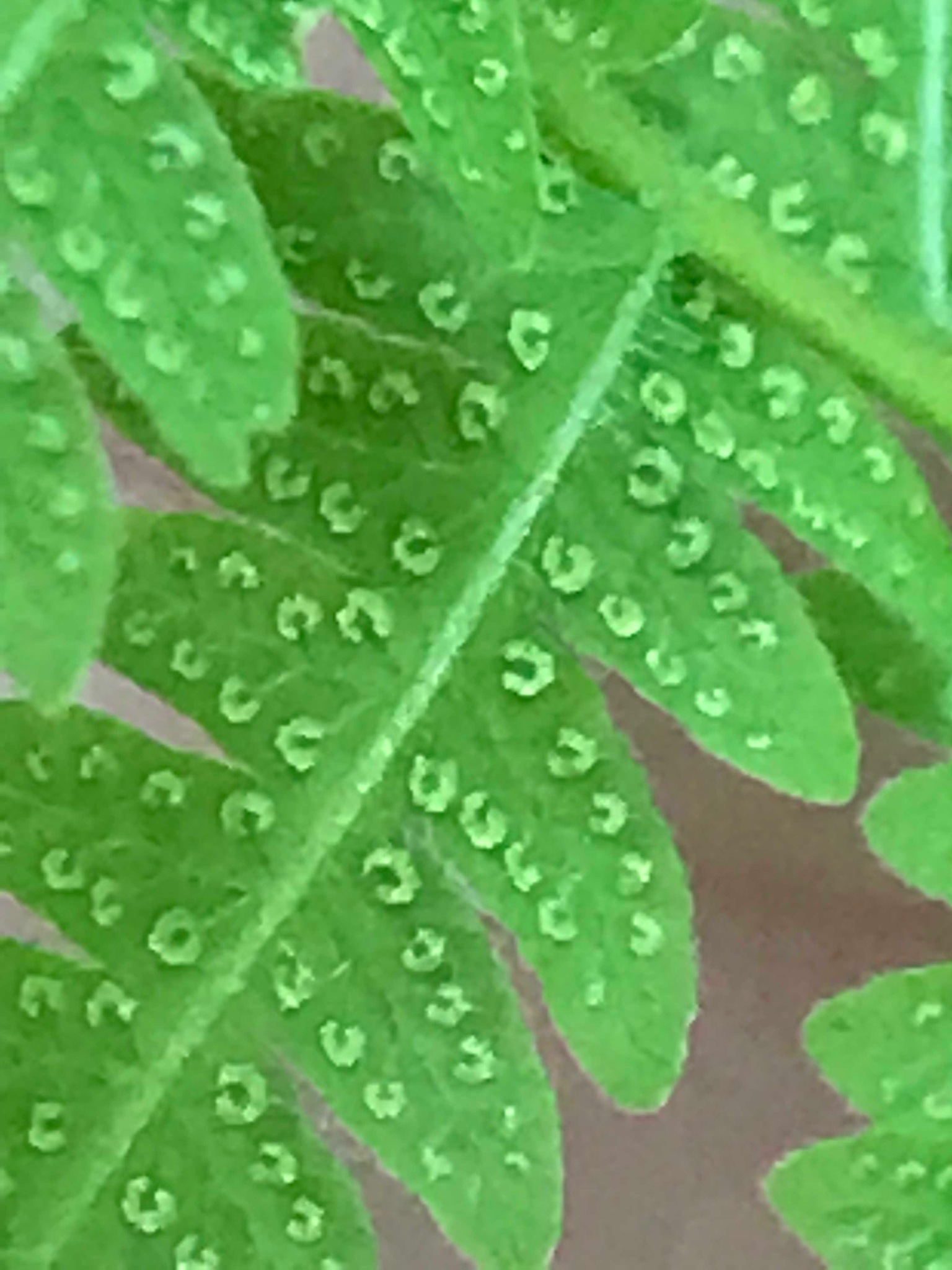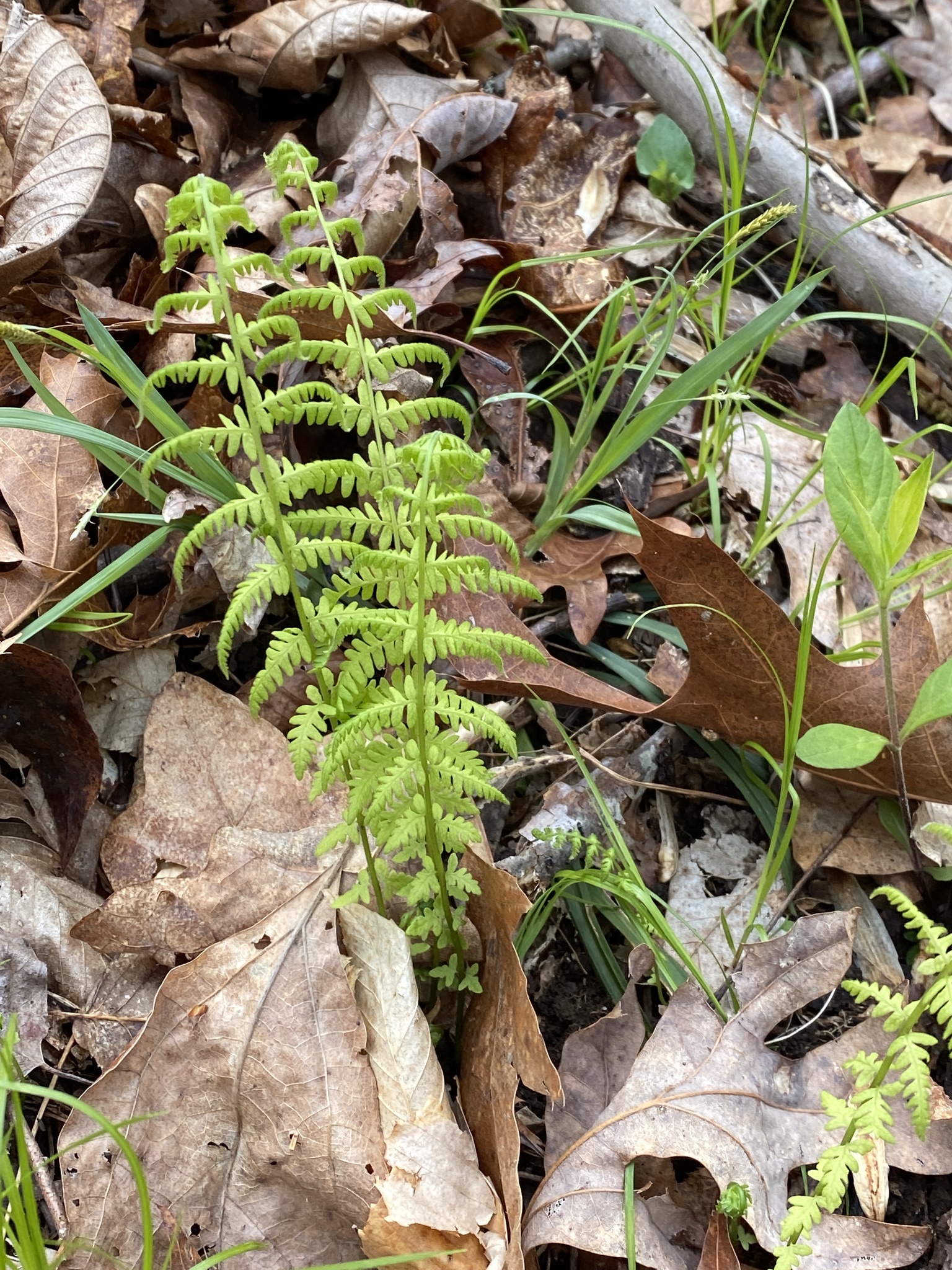Map Snapshot

























754 Records
Seasonality Snapshot
Source: Wikipedia
| Amauropelta noveboracensis | |
|---|---|

| |
| Scientific classification | |
| Kingdom: | Plantae |
| Clade: | Tracheophytes |
| Division: | Polypodiophyta |
| Class: | Polypodiopsida |
| Order: | Polypodiales |
| Suborder: | Aspleniineae |
| Family: | Thelypteridaceae |
| Genus: | Amauropelta |
| Species: | A. noveboracensis
|
| Binomial name | |
| Amauropelta noveboracensis | |

| |
| Range of New York fern via USDA | |
| Synonyms[2] | |
| |
Amauropelta noveboracensis, the New York fern,[3] is a perennial species of fern found throughout the eastern United States and Canada, from Louisiana to Newfoundland, but most concentrated within Appalachia and the Atlantic Northeast. New York ferns often forms spreading colonies within the forests they inhabit.
Description
[edit]This fern grows in clumps of three or more fronds[4] along a dark brown, slightly scaly rhizome. The frond is held on a stipe which is 20% of the length of the leaf[5] and brown at the base but becoming green as it approaches the leaflets. The stipe is typically covered in brown scales at the base and finely hairy farther up. The leaf is overall 8–25 inches (20–64 cm) long, yellow-green, rather soft and thin in texture, and tapers at either end with the lowest 4-10 leaflets being generally smaller than those above.[6] The leaf is divided into approximately 20 pinnae or leaflets, these leaflets are deeply cut into smaller, oblong and rounded subleaflets. It produces both fertile and sterile fronds—the fertile fronds are larger and more upright, and produce a few small, round sori near the margins, but not touching the margins, of the pinnae. These sori are covered by a tan, hairy, kidney-shaped indusium.[4]
It is distinctive by its pinnae tapering to the base of the frond, and by its forming extensive clonal colonies on ridgetops and mountain benches.[5] The only other native species in this area with similarly tapering pinnae is the ostrich fern, which generally grows in riparian habitats and is much taller (up to 1.5 m or 4.9 ft).[4] The only other species that forms as extensive clonal colonies is the hay-scented fern. Unlike the hay-scented fern, New York fern grows along a dark brown, slightly scaly trailing rhizomes, for comparison, hay-scented fern grows along a smooth rhizome with only one frond arising at a node.[4] Hay-scented fern also has leaflets which are much more finely cut or jagged on the edges whereas New York fern typically has smooth rounded edges to its leaflets.
-
Showing leaflet structure
-
Showing the colonial habit
Ecology
[edit]New York fern is common in sunny patches caused by canopy gaps in mixed woodlands, near vernal seeps, at the edge of swamps, in wooded ravines, and along streams. Once soil pH levels decline below 4.1, this fern can become a dominant understory species. In such situations, it may out-compete the seedlings of certain tree species, some of which are commercially important. The seedlings of Prunus serotina are especially vulnerable, as the fern releases an allelopathic phenol which can kill them.
This fern is a wetland indicator, and an endangered species in Illinois.
References
[edit]- ^ "NatureServe Explorer 2.0 - Thelypteris noveboracensis New York Fern". explorer.natureserve.org. Retrieved 9 October 2020.
- ^ a b Hassler, Michael (July 2, 2022). "Amauropelta noveobracensis". Checklist of Ferns and Lycophytes of the World. 13.2. Retrieved 2022-07-19.
- ^ NRCS. "Thelypteris noveboracensis". PLANTS Database. United States Department of Agriculture (USDA). Retrieved 9 December 2015.
- ^ a b c d Cobb, Boughton (1956). A field guide to ferns and their related families of Northeastern and Central North America: with a section on species also found in the British Isles and Western Europe. Illustrated by Laura Louise Foster (1st ed.). Boston: Houghton Mifflin. ISBN 0-395-19431-8.
- ^ a b Rhoads, Ann; Block, Timothy (2007-09-05). The Plants of Pennsylvania (2 ed.). Philadelphia: University of Pennsylvania Press. ISBN 978-0-8122-4003-0.
- ^ Smith, Alan R. (1993). "Thelypteris noveboracensis". In Flora of North America Editorial Committee (ed.). Flora of North America North of Mexico (FNA). Vol. 2. New York and Oxford: Oxford University Press. Retrieved 26 June 2016 – via eFloras.org, Missouri Botanical Garden, St. Louis, MO & Harvard University Herbaria, Cambridge, MA.
- Snyder, S. A. (1993). "Thelypteris noveboracensis". Fire Effects Information System (FEIS). US Department of Agriculture (USDA), Forest Service (USFS), Rocky Mountain Research Station, Fire Sciences Laboratory.
- Boughton, Cobb; Lowe, Cheryl; Farnsworth, Elizabeth (2005). Ferns of Northeastern and Central North America (2nd ed.). New York: Houghton Mifflin.



























